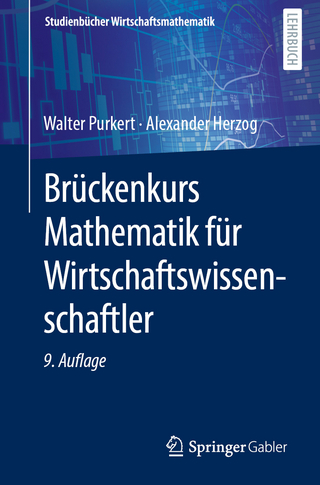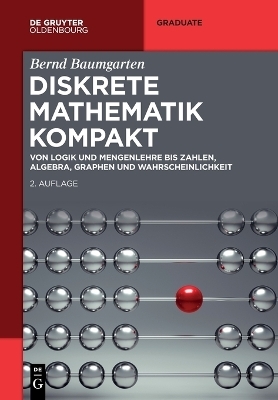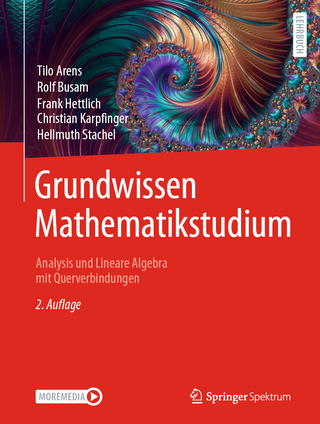
Interpolation and Extrapolation Optimal Designs 2
ISTE Ltd and John Wiley & Sons Inc (Verlag)
978-1-78630-054-6 (ISBN)
The book focuses to a large extent on criteria for optimality, and an entire chapter presents algorithms leading to optimal designs in multivariate models. Elfving’s theory and the theorem of equivalence are presented extensively. The volume presents an account of the theory of the approximation of real valued functions, which makes it self-consistent.
G Celant, Associate Professor of Statistics, University of Padova, Italy. Michel Broniatowski, Professor of Statistics, Universitei Pierre et Marie Curie, Paris, France.
Preface ix
Introduction xi
Chapter 1 Approximation of Continuous Functions in Normed Spaces 1
1.1. Introduction 1
1.2. Some remarks on the meaning of the word “simple”. Choosing the approximation 2
1.2.1. Splines 6
1.3. The choice of the norm in order to specify the error 8
1.4. Optimality with respect to a norm 12
1.4.1. Existence of an optimal solution 12
1.4.2. Uniqueness of the optimal solution 13
1.4.3. Examples 15
1.5. Characterizing the optimal solution 18
1.5.1. The Hilbertian case 18
1.5.2. The non-Hilbertian case 21
1.5.3. Optimization, Lp norms and robustness 24
Chapter 2 Chebyshev Systems 27
2.1. Introduction 27
2.2. From the classical polynomials to the generalized ones 28
2.2.1. Examples of Chebyshev systems 32
2.3. Properties of a Chebyshev system 34
2.3.1. Vector-type properties 34
2.3.2. Chebyshev systems and interpolation 40
2.3.3. Roots of the generalized polynomials 44
Chapter 3 Uniform Approximations in a Normed Space 45
3.1. Introduction 45
3.2. Characterization of the best uniform approximation in a normed space 46
3.2.1. The Haar–Kolmogorov theorem 46
3.2.2. The generalized Borel – Chebyshev theorem 58
3.2.3. Oscillation properties of the best uniform approximation 64
Chapter 4 Calculation of the Best Uniform Approximation in a Chebyshev System 69
4.1. Some preliminary results 69
4.2. Functional continuity of the approximation scheme 71
4.3 Property of the uniform approximation on a finite collection of points in [a, b] 74
4.4. Algorithm of de la Vallée Poussin 80
4.5. Algorithm of Remez 80
Chapter 5 Optimal Extrapolation Design for the Chebyshev Regression 85
5.1. Introduction 85
5.2. The model and Gauss-Markov estimator 87
5.2.1. Description of the dataset 88
5.3. An expression of the extrapolated value through an orthogonalization procedure 91
5.4. The Gauss-Markov estimator of the extrapolated value 93
5.5. The Optimal extrapolation design for the Chebyshev regression 97
5.5.1. The support of the optimal design 97
5.5.2. The frequencies of the optimal design 102
5.5.3. Identification of the optimal design 104
Chapter 6 Optimal Design for Linear Forms of the Parameters in a Chebyshev Regression 107
6.1. Outlook and notations 107
6.2. Matrix of moments 113
6.3. Estimable forms 118
6.4. Matrix of moments and Gauss-Markov estimators of a linear form 119
6.4.1. Matrices of moments and estimable linear forms 119
6.4.2. An alternative form of the lower bound of the variance of the estimator of the c form 129
6.5. Geometric interpretation of estimability: Elfving set 133
6.5.1. Estimable forms and a convex subset of the regression range; the Elfving set 133
6.5.2. Geometry of the Elfving set 137
6.5.3. The relation between cylinders and the variance of the estimator of the c-form 142
6.5.4. Lower bound for the variance 143
6.5.5. The lower bound can be achieved 145
6.6. Elfving theorem 148
6.7. An intuitive approach to Elfving theorem 154
6.8. Extension of Hoel–Levine result: optimal design for a linear c-form 160
Chapter 7 Special Topics and Extensions 169
7.1. Introduction 169
7.2. The Gauss–Markov theorem in various contexts 170
7.2.1. The Gauss–Markov theorem for linear transformations of the parameter under i.i.d. errors 170
7.2.2. Gauss–Markov theorem for heteroscedastic models with correlation 174
7.2.3. The Gauss–Markov theorem and the Loewner order on quadratic forms 176
7.3. Criterions for optimal designs 178
7.3.1. Introduction 178
7.3.2. Some specific criterions 181
7.4. G–optimal interpolation and extrapolation designs for the Chebyshev regression 188
7.4.1. Criteria for optimality 188
7.4.2. Design with minimal uniform variance for a Chebyshev regression 203
7.5. Some questions pertaining to the model 209
7.5.1. Linear heteroscedastic models 209
7.5.2. Nonlinear models, estimators and optimal designs 216
7.6. Hypotheses pertaining to the regressor 225
7.6.1. Regressor in a linear space with unknown finite dimension 225
7.6.2. An extension to the case of analytic regressors 227
7.6.3. On the choice of the degree of the polynomial model 229
7.7. A few questions pertaining to the support of the optimal design for extrapolation 229
7.7.1. Preliminary results and notation 230
7.7.2. Optimal designs whose support is the Chebyshev set of points 235
7.8. The proofs of some technical results 239
7.8.1. Proof of proposition 7.1 239
7.8.2. Proof of theorem 7.17 241
Chapter 8 Multivariate Models and Algorithms 249
8.1. Introduction 249
8.2. Multivariate models 250
8.2.1. Notation 250
8.2.2. Predictors and their variance 254
8.2.3. Some construction of multivariate models 255
8.3. Optimality criterions and some optimal designs 257
8.3.1. Criterions for optimality and characterization of the optimal design 257
8.3.2. D−optimality, direct sum and tensor product 262
8.4. Algorithms 266
8.4.1. General aspects 266
8.4.2. Specific algorithms 271
Bibliography 289
Index 295
| Erscheinungsdatum | 07.04.2017 |
|---|---|
| Verlagsort | London |
| Sprache | englisch |
| Maße | 155 x 239 mm |
| Gewicht | 635 g |
| Themenwelt | Mathematik / Informatik ► Mathematik |
| ISBN-10 | 1-78630-054-0 / 1786300540 |
| ISBN-13 | 978-1-78630-054-6 / 9781786300546 |
| Zustand | Neuware |
| Informationen gemäß Produktsicherheitsverordnung (GPSR) | |
| Haben Sie eine Frage zum Produkt? |
aus dem Bereich


